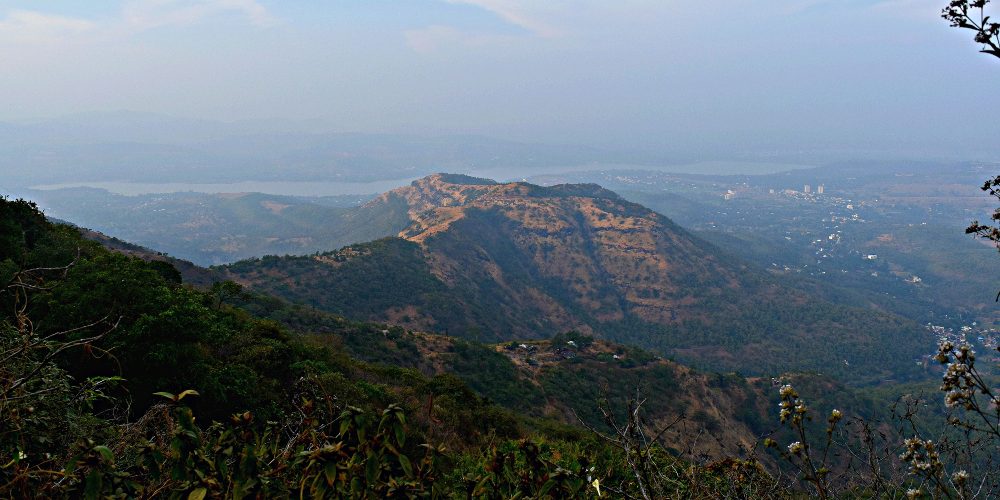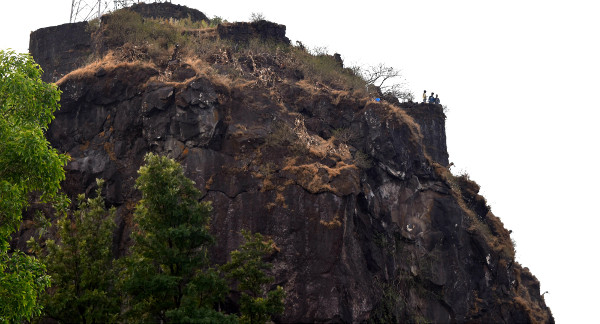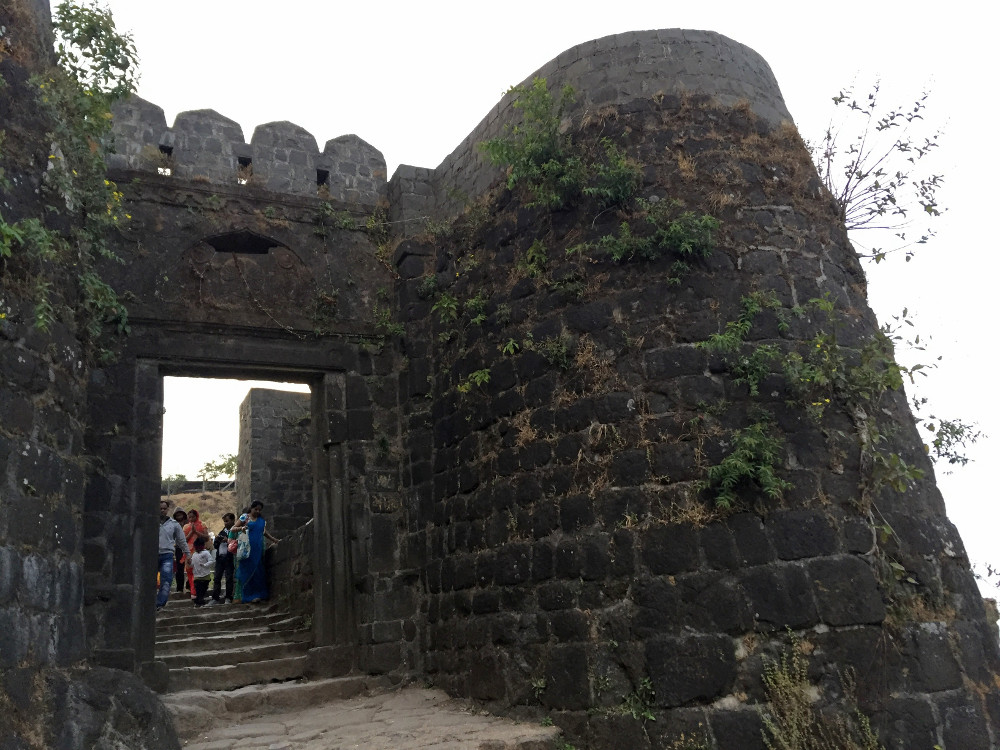On February 4, 1670 in a stunning act of daredevilry, 300 Maharashtrian soldiers led by Tanaji Malusare, one of the ablest commanders of Maratha king Shivaji, climbed the almost vertical rock face of the fort of Sinhgad and then overcame a strong Mughal garrison there.
The assault on Sinhgad was the beginning of a final showdown between the Marathas and the Mughals. This epic war, which would last nearly three decades, followed the breakdown of truce between Shivaji and the Mughal emperor Aurangzeb because of the latter’s treachery.
On February 24, 1668, Aurangzeb wrote a letter to Shivaji, saying he only wanted good terms with the Maratha ruler: “We hold you in high esteem. On hearing the contents of your letter we have dignified you with the title of Raja. You will receive this distinction and show greater capacity for work. Your wishes will then be fulfilled. You have spoken to us about your achievements. Everything will be set right. Be free from anxiety and understand that you are in favour.”
However, the letter was part of a trap. Jealous of the amicable relations between his son prince Muazzim – who was in charge of the Deccan – and Shivaji, Aurangzeb sent his son an order directing him to place Shivaji and his commander Prataprao Gujar under arrest.
Muazzim, however, did not want to spark another round of warfare by arresting Shivaji. Before the order arrived, he heard of it from his confidential agent at Delhi, and advised Shivaji to leave Aurangabad with Gujar.
Charles Augustus Kincaid writes in ‘A History of the Maratha People’, that when Shivaji heard about Aurangzeb’s treachery, he could hardly have been otherwise than angry at the news conveyed to him by Prataprao Guzar, but he concealed his anger under a show of satisfaction. “The Moghuls,” he said laughing, “have maintained my cavalry for two years at their own expense. I shall now show them how much my horses have profited by their care.”
The Mughal garrisons at Sinhgad and Purandar had long been an eyesore to Shivaji and his mother Jijabai. “The latest treachery of Aurangzeb showed him that it was impossible to remain at peace with the Mughals. He therefore resolved to reduce the two great forts without further delay.”
The Maharashtrian ballads have preserved the account of the attack on Sinhgad. One Monday morning, according to the ballad writer, Shivaji was at Raigad. His mother was at Pratapgad. The latter was combing her hair with an ivory comb. As she looked eastwards, her eyes fell on Sinhgad.
“It was shining in the sun like a new-laid egg. The sight goaded her to fury. She told one of her servants to ride to Raigad and call Shivaji to her, even if he had to get up from his dinner without washing his hands. Shivaji at once obeyed his mother’s summons, donned his armour, took his sword and shield and tiger claws, and mounted his black mare Krishna and, riding as fast as he could to Pratapgad, announced his arrival to Jijabai.
When they met he asked her the cause of her urgent message. She gave him no direct answer, but challenged him to a game of dice. Shivaji at first declined, saying that it was not right for a son to oppose his mother even in a game. But Jijabai overcame his scruples and then prayed to Bhavani for help. With the goddess’ aid she won the match. Shivaji then begged his mother to take as a forfeit any one of the fortresses in his possession. She refused them all, but demanded Sinhgad.
The king protested that the renowned Udai Bhan defended it and that it was impregnable. But Jijabai insisted and threatened to burn up his kingdom with her curses unless he gave her Sinhgad. Shivaji consented and asked her to go with him to Raigad. There he spent several hours thinking whom he should appoint to capture the fortress. At last the name of his old comrade Tanaji Malusare, the chief of Umrathe village in the Konkan, occurred to him. He sent a written message to Tanaji, ordering him to be present at Raigad within three days with his select troops.
The messenger found the 70- year old Tanaji engaged in preparing for the marriage of his son Kayaba. But the wedding was put off and with a group of 1,000 soldiers Tanaji started for Raigad. As he went, a coppersmith bird flew across his path. His uncle Shelar urged him to return as the sight of such a bird was an evil omen. But Tanaji laughed at the old man’s fears and continued his march.
As they neared Rajgad, Jijabai thought that they were Mughals and begged Shivaji to fire on them. But the king recognised his own banners and guessed that the troops were Tanaji’s. Shivaji greeted Tanaji warmly. But the chief, with the freedom of an old friend, scolded the king for disturbing him in the middle of his son’s marriage festivities. Shivaji excused himself, pleading that it was not really he but Jijabai who had sent for Tanaji.
As her son spoke, Jijabai rose. She first thanked Bhavani for Tanaji’s coming, then waved a lamp round Tanaji’s head and cracked her fingers on her temple so as to take to herself all his cares. Tanaji, completely won by the queen’s acts, took off his turban, placed it at her feet, and promised to give her anything she wanted.
She told him to give her Sinhgad and assured him that if he did so, she would regard him as Shivaji’s younger brother and her own son. Tanaji gladly agreed to go forth on the perilous quest.
The Sinhgad fort
Kincaid paints a vivid description of the area. He says that Sinhgad is situated on the eastern side of the Sahyadari ranges, near the point where the Purandar hills branch off into the Deccan. It is connected with these hills on the east and west by very narrow ridges. There is a steep precipice of 40 feet above this height and the strong walls of the fortress stand above this precipice.
The fort is triangular, and its boundary is about two miles in length. Entrance into it was impossible except through the gates. From its summit could be seen the beautiful valley of the Neera to the east. A great plain stretches in the north. Pune stands in the midst of this plain, and in the midst of the mountains far off in the south west lies Raigad. Tanaji Malusare started from this place with a select body of 1,000 Mavalis. He was accompanied by his brother Suryaji.
Keeping his troops at a distance, Tanaji dressed like an ordinary person and mingled with the local Koli people. After winning their confidence, he told them he had been sent by Shivaji to take Sinhgad and requested them to share intelligence, if they had any.
Sinhgad, the Kolis said, had a perimeter of two miles. It was defended by Udai Bhan Rathod who commanded 1800 Pathans and a number of Arabs and a few Rajputs. The Rajput chief was known to be a tremendous warrior of a massive physique and was known to eat prodigious quantities of food. Udai Bhan had a killer elephant called Chandravali and a lieutenant called Sidi Hillal. Plus, he was assisted by his 12 sons, all stronger than himself.
The Kolis then proceeded to offer Tanaji a really valuable piece of information. They told him that while Sinhgad was generally considered impregnable, an attempt could be made from its right side at a point known as the Dongri Cliff.
When Tanaji heard this, he rose, and promising handsome gifts to the Kolis if the fort were taken, he returned to his men. The same night Tanaji and the army went to the gate known as the Kalyan Gate.
The Marathas approached Sinhgad’s western gate known as the Kalyan gate. The troops went by different paths, and reached a place which was least liable to discovery. Tanaji adopted the Maratha device of escalading. According to legend, the Marathas used a Bengal monitor lizard known as the ghorpad to escalade but this story is disputed. “Ghorpade” is a common surname among Marathas and it is likely that one of the first people to scale the fort was named Gorpade.
It is said that two Mawalas – who had known the area very well in their childhood and were experts at this sort of thing – escaladed the rock and the wall at a vulnerable point. Going to the top of the wall they let down a rope-ladder. Tanaji then led the escalade. With their swords in their teeth, he and 50 men after him climbed up the rope.
When these had reached the summit, so great was the rush of their comrades to climb up also, that the rope broke. The men who had reached the top of the fort were now in a desperate position and would have tried to jump down its sides. But Tanaji kept his head and asked them to follow him and surprise the guards.
The party crawled to the Kalyan Gate and noiselessly killed the Arabs guarding it. They then crawled to the second gate, where they killed 300 Pathans, and a third gate where they killed 400 Pathans. One, however, escaped and raised the alarm. Udai Bhan, who was about to retire for the night, ordered that his elephant Chandravali be unleashed against the enemy.
Its mahout gave the monster an incredible quantity of opium and drove it against Tanaji. The latter, however, evaded its charge and springing on its back killed it by cutting off its trunk with a single sword stroke. Udai Bhan next sent Sidi Hillal to meet the enemy. Sidi Hillal donned his armour, and killing his nine wives (so they would not marry other men in case he died), marked his forehead with their blood and then sought out Tanaji.
On meeting the Maratha chief, Sidi Hillal bade him take grass in his mouth, put his sandals on his head, and beg for mercy. Tanaji refused, and after warding off 18 successive sword cuts, sliced Sidi Hillal from the turban to the navel. Udai Bhan, perhaps under the influence of wine and opium, ordered his 12 sons to go forth to battle. “But they were no more fortunate than their forerunners – 12 strokes of Tanaji’s sword cut them into 24 pieces.”
His sons’ death at last roused Udai Bhan. He cut down his wives just as Sidi Hillal had done and rallying the rest of the garrison he went towards Kalyan Gate. Seeing that the storming party only numbered 50, Udai Bhan and his Pathans rushed at them.
A terrible hand-to-hand fight took place in the light of torches. Udai Bhan lunged at Tanaji and broke his shield. The massive Rajput’s blows were proving too much for Tanaji who fought back with great vigour but without a shield, he was greatly handicapped. Udai Bhan took the opportunity to cut off Tanaji’s left hand but the Maratha chief kept fighting despite the loss. As the battle raged around him, Tanaji made a desperate lunge at Udai Bhan and cut off his head, but weakened by the loss of blood, fell dead himself.
The remaining Mawalas were on the point of running back when Suryaji, who had come up by this time with the help of the rope ladder with more Mawalas, stopped them and led them back to a fresh attack and finally to victory. The fort was taken and the Mughal soldiers who had concealed themselves were taken prisoners, while those who attempted to escape by jumping over the wall were mostly killed.
A thatched horse-shed was set fire to as a signal and Shivaji saw it and knew to his intense joy that the fort had been taken. The intense joy soon changed into intense grief when he knew that Tanaji, his loyal friend and follower through life, had fallen.
“The fort is taken,” he exclaimed, “but the lion is lost forever.”
Prelude to victory
Tanaji’s sacrifice did not go in vain. One month after the fall of Sinhgad Purandhar was occupied without much resistance. By the end of June Maholy, Kurnalla and Lohgad were taken. After Shivaji’s death, the battle was continued by his sons and grandson and the later Maratha rulers until the Marathas occupied nearly 70 per cent of undivided India. As for the Mughals, the once proud dynasty ended up becoming vassals of the Marathas.
Sources
- Charles Augustus Kincaid – A History of the Maratha People
- Upendra Nath Ball – A Short History of the Marathas
Disclaimer: The opinions expressed within this article are the personal opinions of the author. IndiaFacts does not assume any responsibility or liability for the accuracy, completeness, suitability, or validity of any information in this article.
Rakesh is a globally cited defence analyst. His work has been published by the Centre for Land Warfare Studies, New Delhi; Russia Beyond, Moscow; Hindustan Times, New Delhi; Business Today, New Delhi; Financial Express, New Delhi; BusinessWorld Magazine, New Delhi; Swarajya Magazine, Bangalore; Foundation Institute for Eastern Studies, Warsaw; Research Institute for European and American Studies, Greece, among others.
As well as having contributed for a research paper for the US Air Force, he has been cited by leading organisations, including the US Army War College, Pennsylvania; US Naval PG School, California; Johns Hopkins SAIS, Washington DC; Centre for Air Power Studies, New Delhi; Carnegie Endowment for International Peace, Washington DC; Rutgers University, New Jersey; Institute of International and Strategic Relations, Paris; Institute for Strategic, Political, Security and Economic Consultancy, Berlin; Siberian Federal University, Krasnoyarsk; Institute for Defense Analyses, Virginia; International Center for Not-for-Profit Law, Washington DC; Stimson Centre, Washington DC; Foreign Policy Research Institute, Philadelphia; Center for Strategic & International Studies, Washington DC; and BBC.
His articles have been quoted extensively by national and international defence journals and in books on diplomacy, counter terrorism, warfare, and development of the global south.



